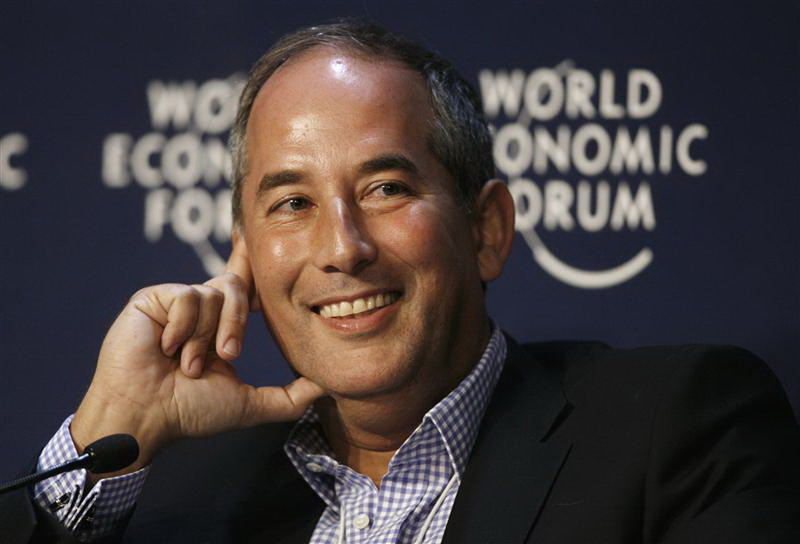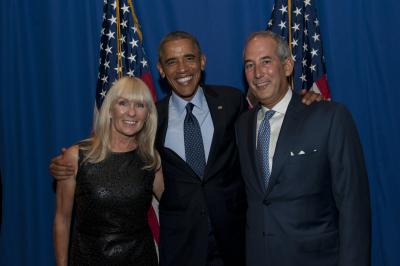But journalism is alive and well.
Lionel Barber of the FT masterfully moderated the 2009 installment in the long-running Davos debate on the health of the media entitled "Fragility in the Fourth Estate." Joining me on the panel were Steve Forbes of the eponymous magazine; Jonathan Nelson of Providence Equity Partners the media-focused buyout firm; Shobhana Bhartia of the Indian Parliament and the Hindustan Times; and John Graham of Fleishman-Hillard the global PR firm.
While we broke little new ground the discussion was uncharacteristically animated for a 9:00am audience. While Luddites and Refusniks remain there seems to be growing acceptance of the point I and others have been making for years: Newsprint is an output device not an end in itself. What matters is quality journalism which can and does thrive in multiple media.
There are several advantages of paper: it is light to carry highly legible and can be folded written upon and read on the train or in the small tiled room. However paper has its limitations: it is relatively expensive must be physically delivered is less environmentally friendly than digital bits and cannot be easily searched or processed. This latter point has resulted in the near destruction of the print newspaper model as classified advertising has fled online.
While these trends are not universal (Shobhana reminded us that newspapers in India continue to thrive) the combination of these structural challenges with the tremendous cyclical pressures being experienced in most markets should not make one optimistic about the future of the print-only model.
Instead of lamenting that the Fourth Estate is dead we should celebrate the innovations of the current age that can now be applied to telling the story such as blogs wikis IPTV social media the mobile web Kindle electronic ink etc.. For those who can make the leap while not abandoning their journalistic values new audiences await.






New audiences yes many possibly some of them possibly one reader/listener large. I don’t think audiences are the problem nor should they be what occupationally motivates the journalist. Telling a story of value any story any value will find an audience but an audience large enough to generate an open and honest source of livelihood for the journalist begins to state the problem. Maintaining journalistic values (integrity) will help in the development of an audience but is probably not enough. And how to maintain integrity. As is true in print institutions are probably the answer but paying for them is thus far the insurmountable problem. I have recently read http://www.nytimes.com/2009/01/28/opinion/28swensen.html?ref=todayspaper&pagewanted=all on endowment for journalism. I think this idea should be thoughtfully & thoroughly debated. There just might be a real answer somewhere in the community formed around this thought.
I would add one more point to the limitations of newsprint: it can’t be updated more than once a day. Immediate gratification is very important to our society. Who can wait 24 hours to find out the latest news anymore? When the jet crashed in the Hudson River last month I had the news within 15 minutes and followed online news sites for the rest of the afternoon to get the latest. By the time my newspaper came out the next morning I barely glanced at it. At that point it was old news! As a former newspaper journalist I am very sad to see the death of the paper. However this does not mean the death of the news! The world of online journalism has opened up many opportunities that did not exist 15 years ago.
This is an interesting article. Neverthelss while I prefer my newspaper with breakfast and read it before falling asleep communication has changed much on how we read and distribute information. For instance WEF Davos had a non-official no-nonsense Twitter feed from WEFdavos that managed to do about 600 tweets for the 4.5 days. Breaking news via Twitter or any micro-blogging technology. The searchable file has some real nuggets see here Using Twitter for documenting WEF Davos I am at the point where I keep my newspaper but keep my eyes open to all the other changes in the media space. Thanks for this nice post.
WEFdavos that managed to do about 600 tweets for the 4.5 days. Breaking news via Twitter or any micro-blogging technology. The searchable file has some real nuggets see here Using Twitter for documenting WEF Davos I am at the point where I keep my newspaper but keep my eyes open to all the other changes in the media space. Thanks for this nice post.
its unfortunate but newspapers are a dieing breed.
Hi Tom I remember back in 2006 I’ve attended a round table you hosted in Geneva and what I most recall was how positive you were about consumer to media. This was obviously before the merger. Do you still see the “future” growth in that space with Iphone RIM web 3.0 and soo many interactive platforms out there? This is a topic I’d love to read your views on. Looking fwd for the 24th 🙂 Thanks
Tom I agree with what your saying that we should use IPTV and digital bits for news they will be very easier.
Tom – I was wondering whether Thomson-Reuters had thought about a ‘kindle’ which can sync with Endnote libraries and also has the ability to highlight comment and sync updated pdf files attached to such libraries? The kindle does not have all of these abilities but such a device would be used by scientists (and many other disciplines that use EndNote as a reference/pdf library) worldwide. Sorry to post this on your blog. MBC